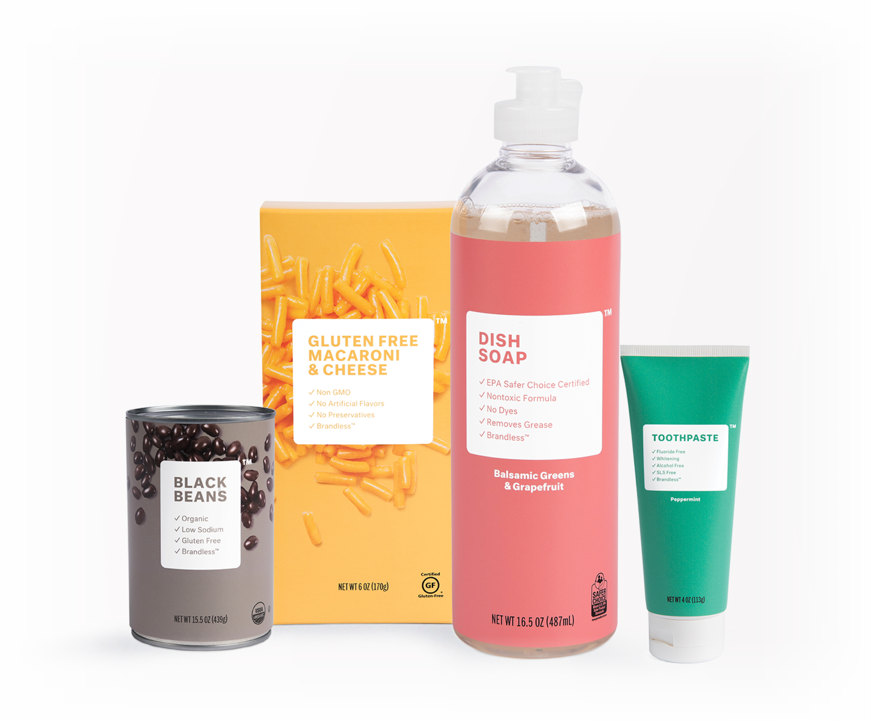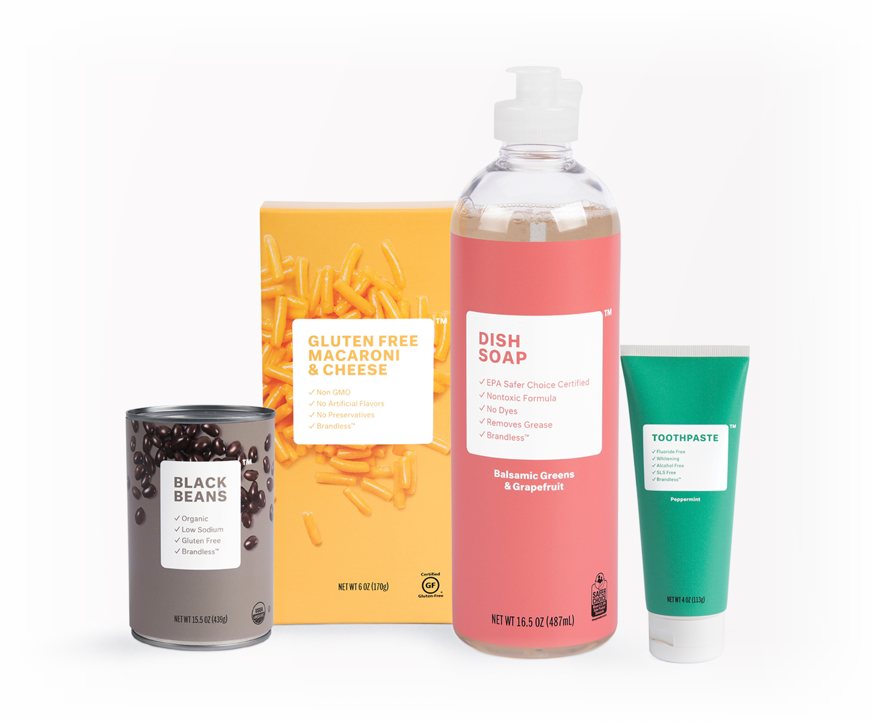

This article previously appeared on Just-Food.
While Amazon Prime Day may have dominated the headlines last week, the launch of private-label CPG start-up Brandless also garnered considerable industry attention.

Pitching itself as the ‘Procter & Gamble for millennials’, the direct-to-consumer (DTC) grocery site sells everyday essentials like coffee, peanut butter, toothpaste and hand soap. All products are organic, unbranded and sell for a single price-point of $3.
According to co-founder Tina Sharkey, the Brandless vision is about ‘reinventing modern consumption by making better stuff at fairer prices available to everyone.’
My initial reaction is that this looks like an early version of an interesting idea. Single price points are intriguing and cheap is chic, but Brandless will face stiff competition from Amazon and Jet, which have significantly better demand data and are both aggressively innovating on the online CPG value equation (Amazon with a growing portfolio of own labels and Jet by giving shoppers more options to trade convenience for savings.)
With all its VC funding (it’s raised $50 million in funding to date) and a business focused on low-margin essentials, Brandless has the mandate to grow. But its membership and shipping fees are self-imposed obstacles to growth. (Brandless offers a subscription service called “B.More” priced at $36 a year, which lowers the free shipping threshold from $72 to $48. For all other orders, a flat shipping rate of $9 is charged).
A few other early observations:
- The single price-point positioning is intriguing but may be tough to sustain. It will basically force Brandless into pack configurations that often won’t align with consumer preferences.
- I’m very curious about the Brandless assortment strategy. Amazon has incredible proprietary insight into demand gaps based on 1P & 3P sales, search data, and reviews. They have great visibility into category size & growth, on-trend product benefits & attributes, and pain points about market-leading products. It’s not clear that Brandless has comparable insight. Boxed, another online retailer of everyday household essentials, also has a very limited assortment–but they’re drafting on the equity and demand created by leading national brands.
- Without consumer ratings & reviews, Brandless will have a very tough time building trust. This early, weak product detail is to be expected, but they’ll need to improve here.
- I’d expect Brandless to offer item-level subscriptions, which would let Brandless offer incremental value, help them lock shoppers in and make sales and supply requirements more predictable, and lower their shipping costs by batching subscription items into ground freight shipments.
While this first iteration leaves room for improvement, growing demand for organically-sourced products, convenience, transparency, simplicity, and value serve as a backdrop that represents ample opportunity for a new entrant like Brandless.
To stay up-to-date on the latest eCommerce CPG news and insights, you might also be interested in signing up to Profitero’s weekly Digital Shelf Digest.


























